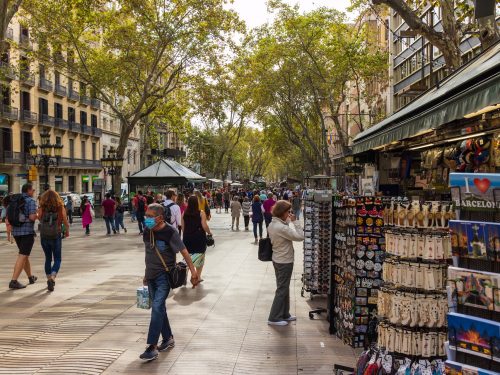
What To See, Do, and Skip While Walking on La Rambla in Barcelona
La Rambla, a pedestrian boulevard in Barcelona, may sound like any flâneur’s dream with its long line of beautiful trees, variety of cafes…
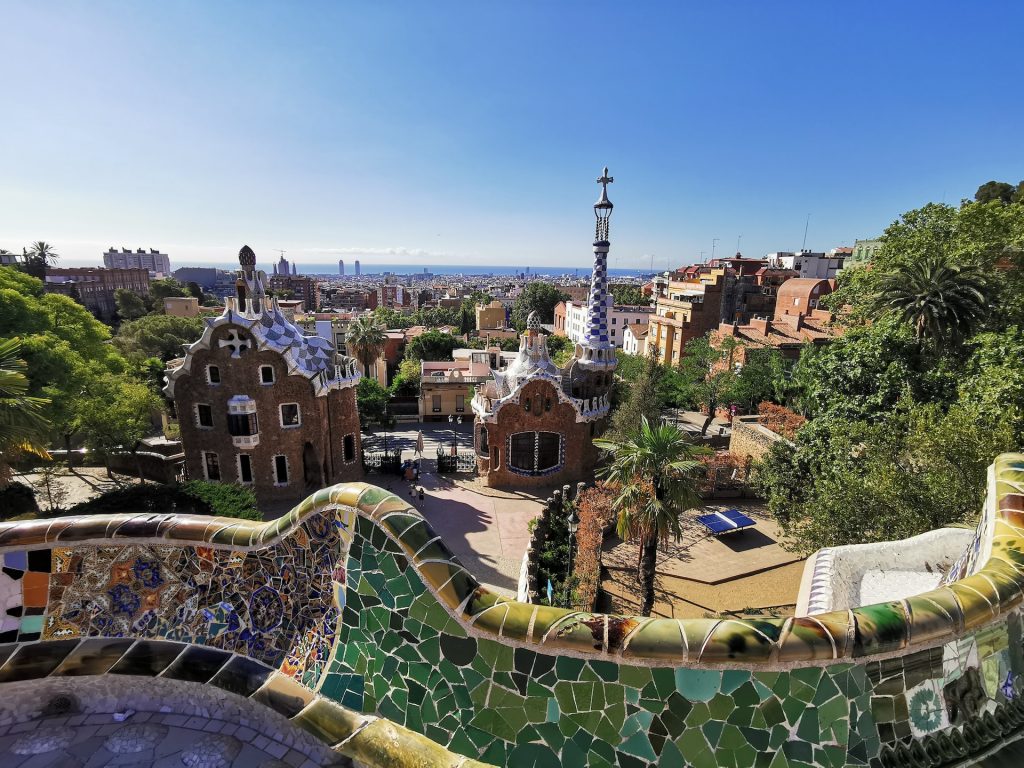
Planning to visit Park Güell on your trip to Barcelona? It’s a must-see in the city, and this guide will help you know what to look for in this architectural playground and understand why it’s important.
But first off, notice anything interesting about the name Park Güell? Obviously, it’s not called Park Gaudí, even though this whimsical landmark is marked with the Catalan architect’s signature modernist style.
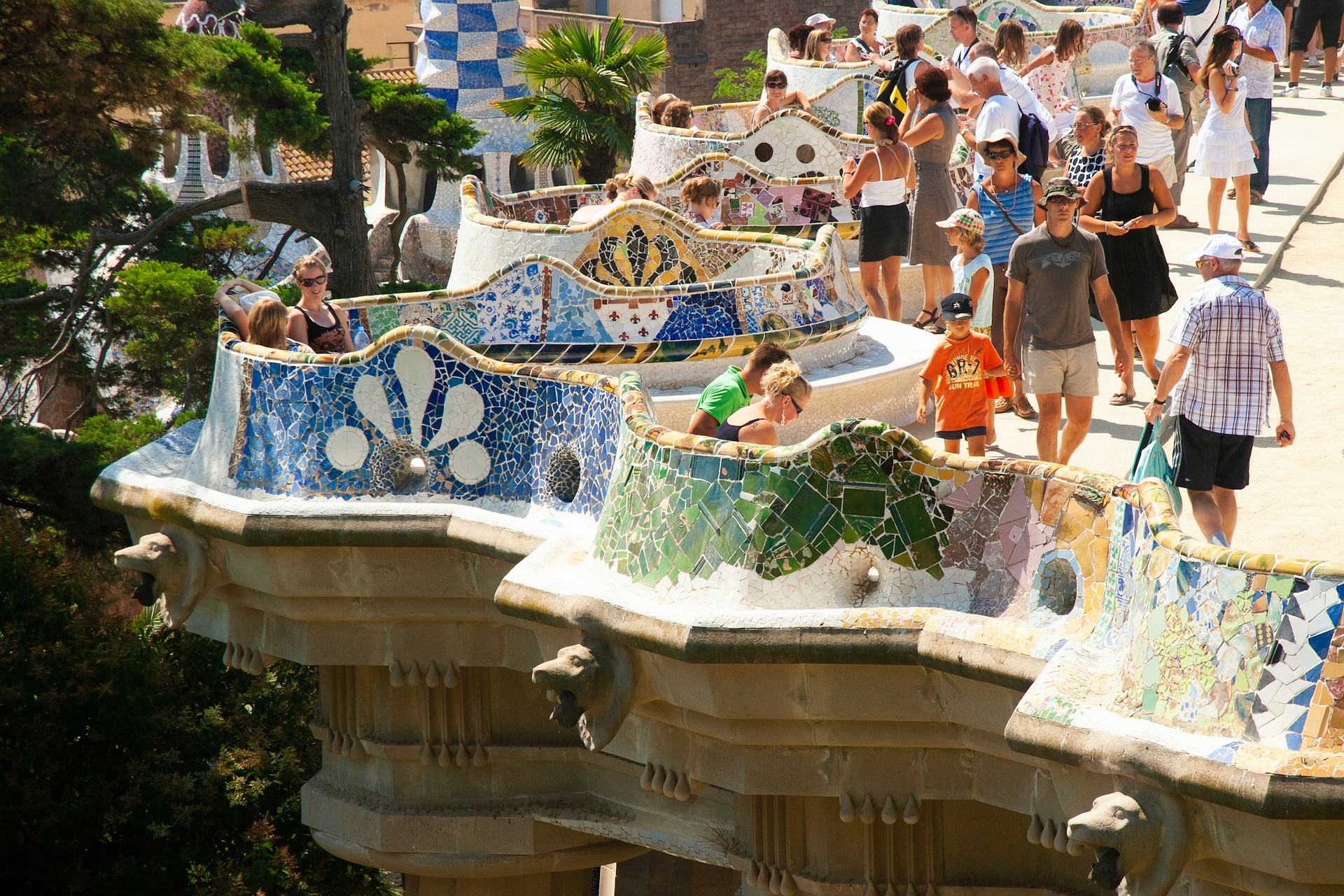
That’s not all that stands out, though.
“Park” isn’t in Catalan (Parc Güell) or even in Spanish (Parque Güell) — it’s in English. Why? Gaudí used the English “park” as a nod to the 20th-century British garden city movement that inspired him. In his design for what was originally a housing development for wealthy families, Gaudí wanted to recreate the self-sufficient recreational parks being built in Britain.
The other half of the park’s name comes from Eusebi Güell, the man who commissioned Gaudí to bring his idea for a housing community to life. Güell was a Catalan industrialist whose relationship with Gaudí started in the late 19th century, after he first saw and admired the designer’s work at the Paris Universal Exhibition of 1878. He entrusted Gaudí with several projects, including the construction of his home Palau Güell that you can visit during one of your walks on La Rambla.
In 1900, production began on Park Güell. The idea was to attract families to purchase one of the 60 triangular plots of land and build a house to live in. Located on Carmel Hill, part of the Collserola mountain range, Eusebi Güell hoped the site’s beautiful views and fresh air would entice people to move.
The housing development wasn’t as popular as Güell and Gaudí hoped it would be. Gaudí’s intention was to save the topography of the land with his design — every path, viaduct, and staircase in Park Güell feels like it’s a natural part of the landscape — which meant there were strict rules to follow for building a home on one of the plots. For example, a house couldn’t be built high enough to obstruct other tenants’ views or block the sun from hitting their land.
By 1914, only two plots of land were purchased by Gaudí and Güell, who each built homes in the park. Eusebi Güell died in his home in 1918, and his family donated what had essentially become a large private garden with a Willy Wonka vibe to the city. In 1963, Gaudí’s house inside Park Güell also opened to the public as Casa Museu Gaudí.
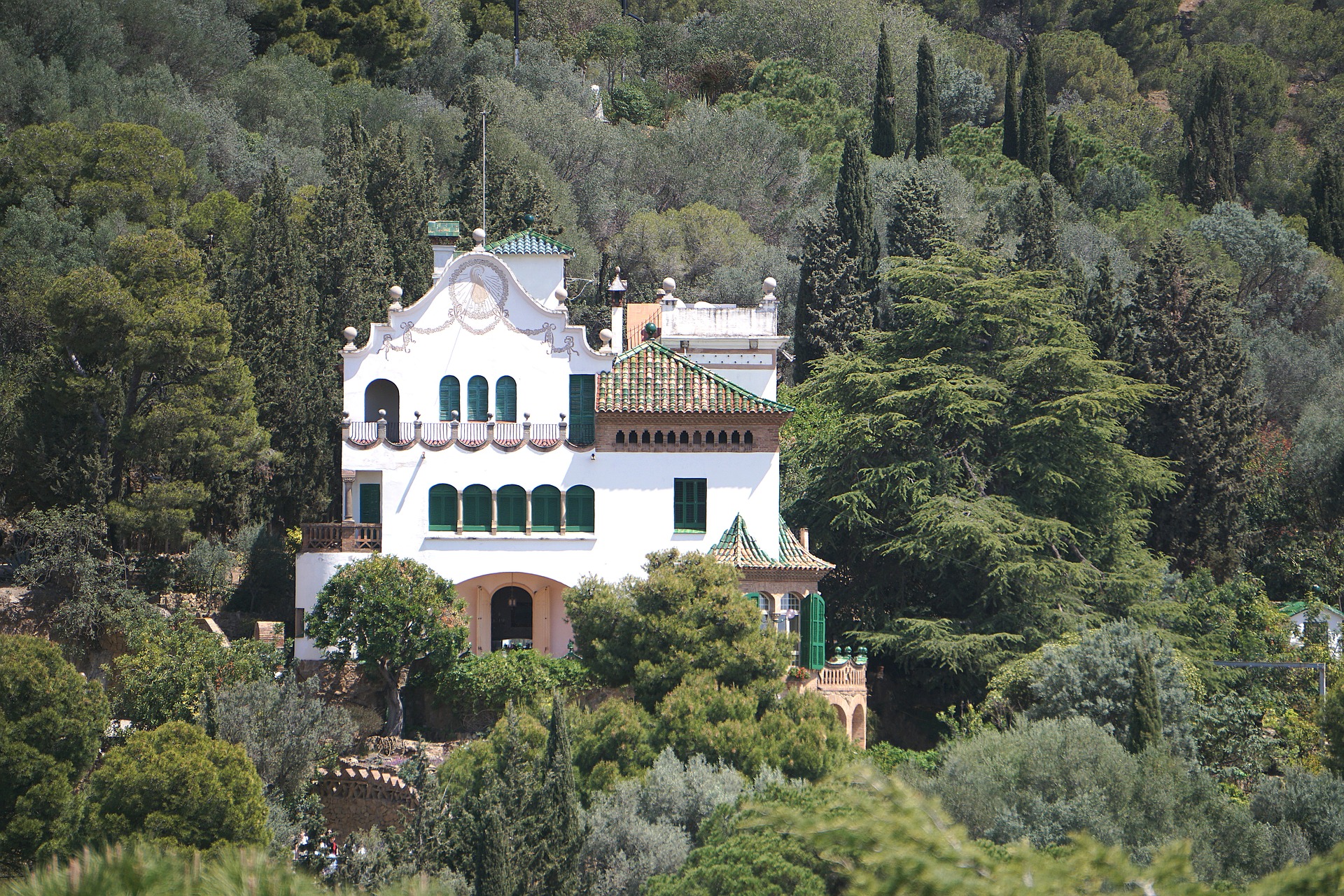
Park Güell may have failed as a housing development, but today it’s a UNESCO cultural heritage site that attracts 9 million visitors a year. In this post, you’ll learn more about visiting Gaudí’s natural modernist park.
Park Güell is sometimes called “a playground for the mind” with its structures that mimic or seem to grow out of the landscape.
Large columns look like palm tree trunks, a mosaic dragon greets visitors as they walk up and down a divided stairway, and no structure within the park is built to follow a straight line because that wouldn’t be “natural.” Nature was always a source of inspiration for Gaudí, and it shows in his playful design of what was meant to be a city within a city.
Here are some of the most popular sites.
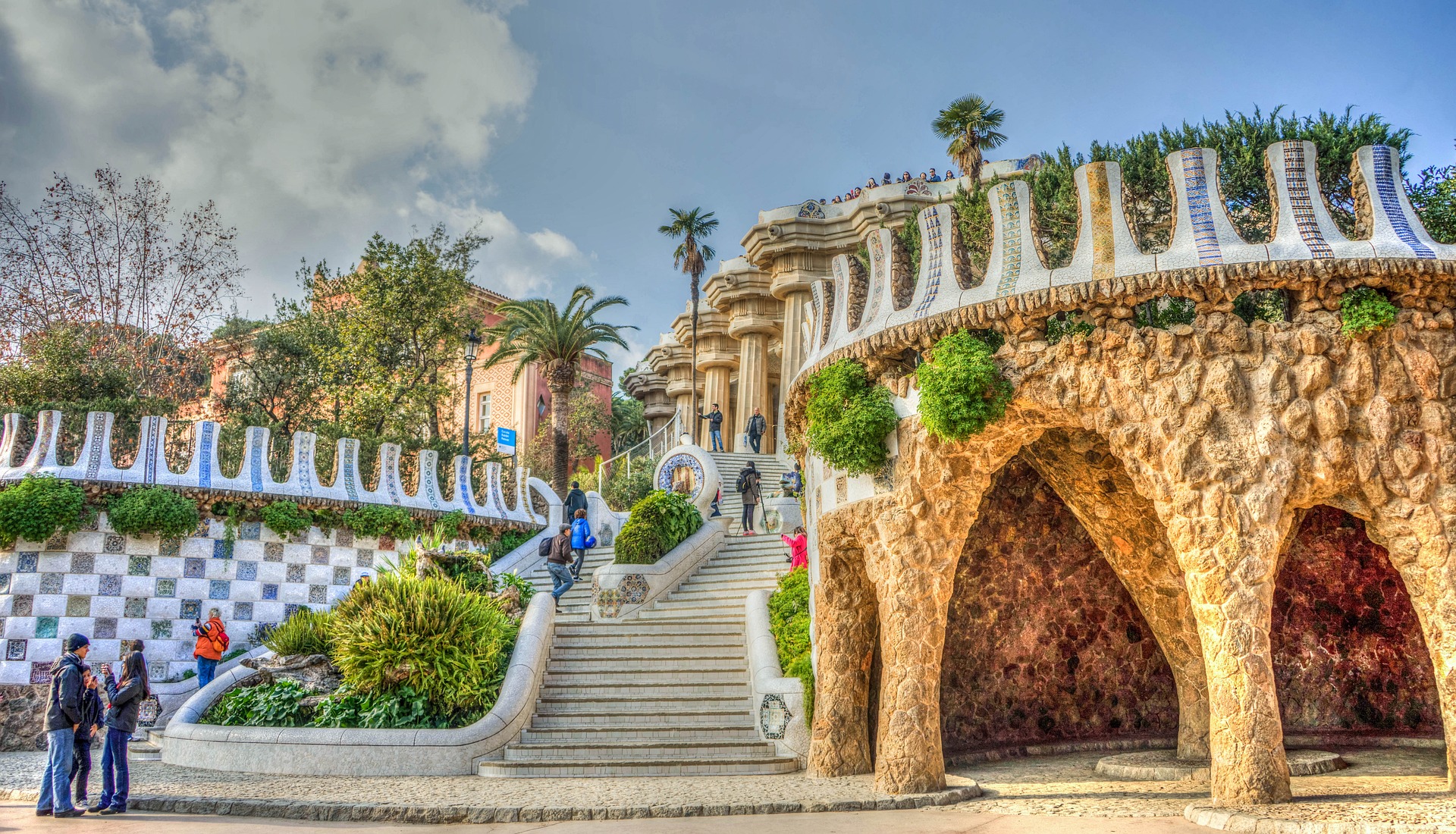
Twin flights of stairs that are divided into three sections mark the grand entrance of the park. There’s something to see on each landing, but the smiling dragon covered with decorative mosaic tiles, fondly known as El Drac, is on the second one.
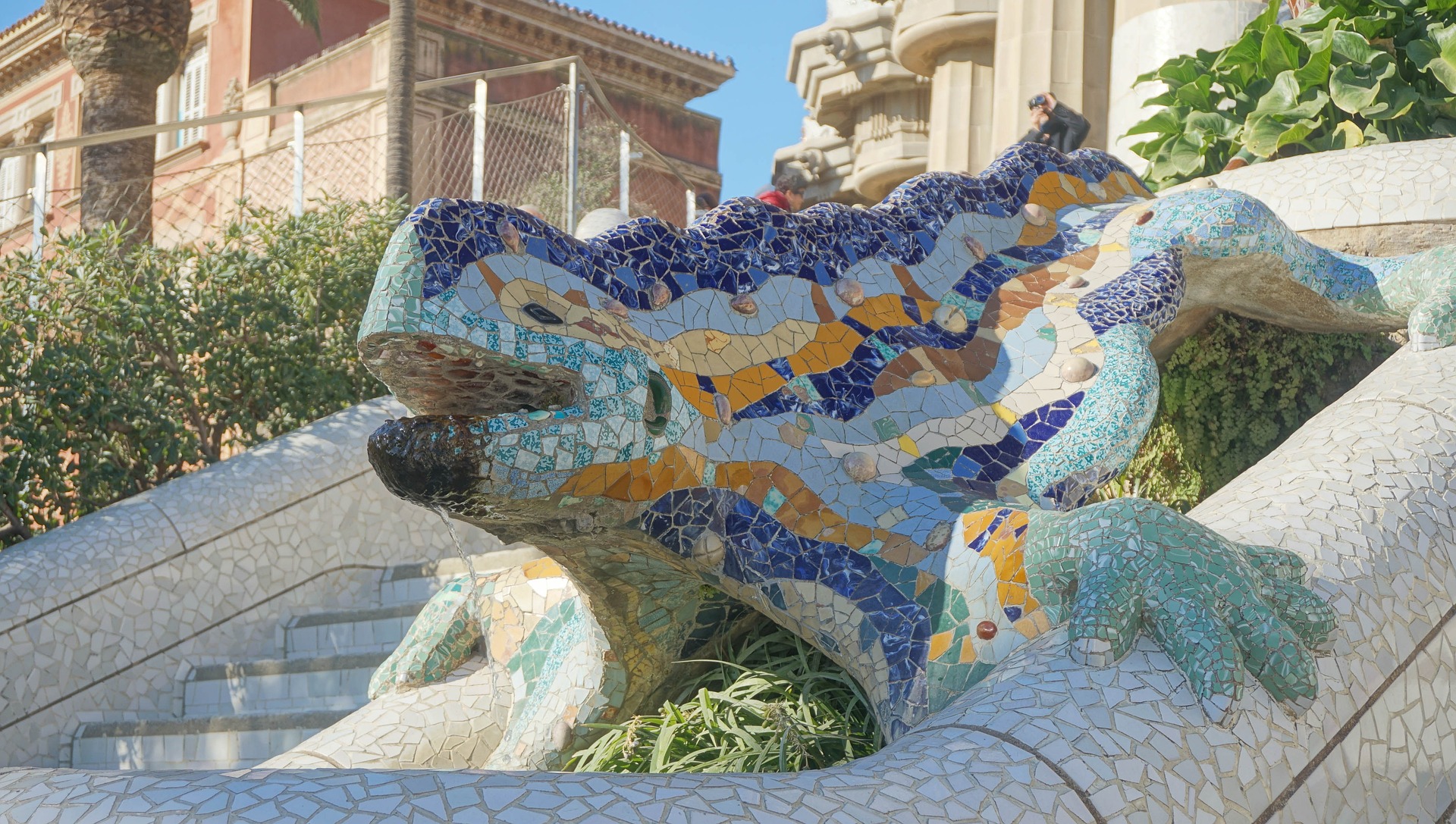
Visitors love taking pictures of or selfies with this colorful lizard that Gaudí created using his “trencadís” technique, where broken shards of mosaic tiles are laid asymmetrically. You’ll notice this style throughout the park, but it’s a little unexpected to take the shape of a lizard.
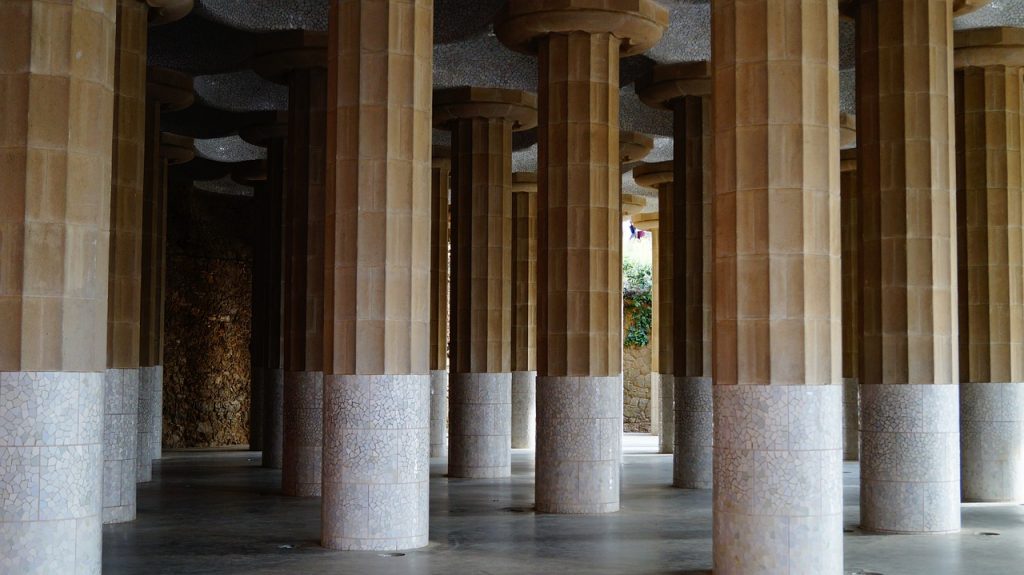
If you can imagine a large, bustling market on a Saturday morning happening in the Hypostyle Room, that’s actually what Gaudí intended. He wanted to have a marketplace where residents on the estate could gather and shop.
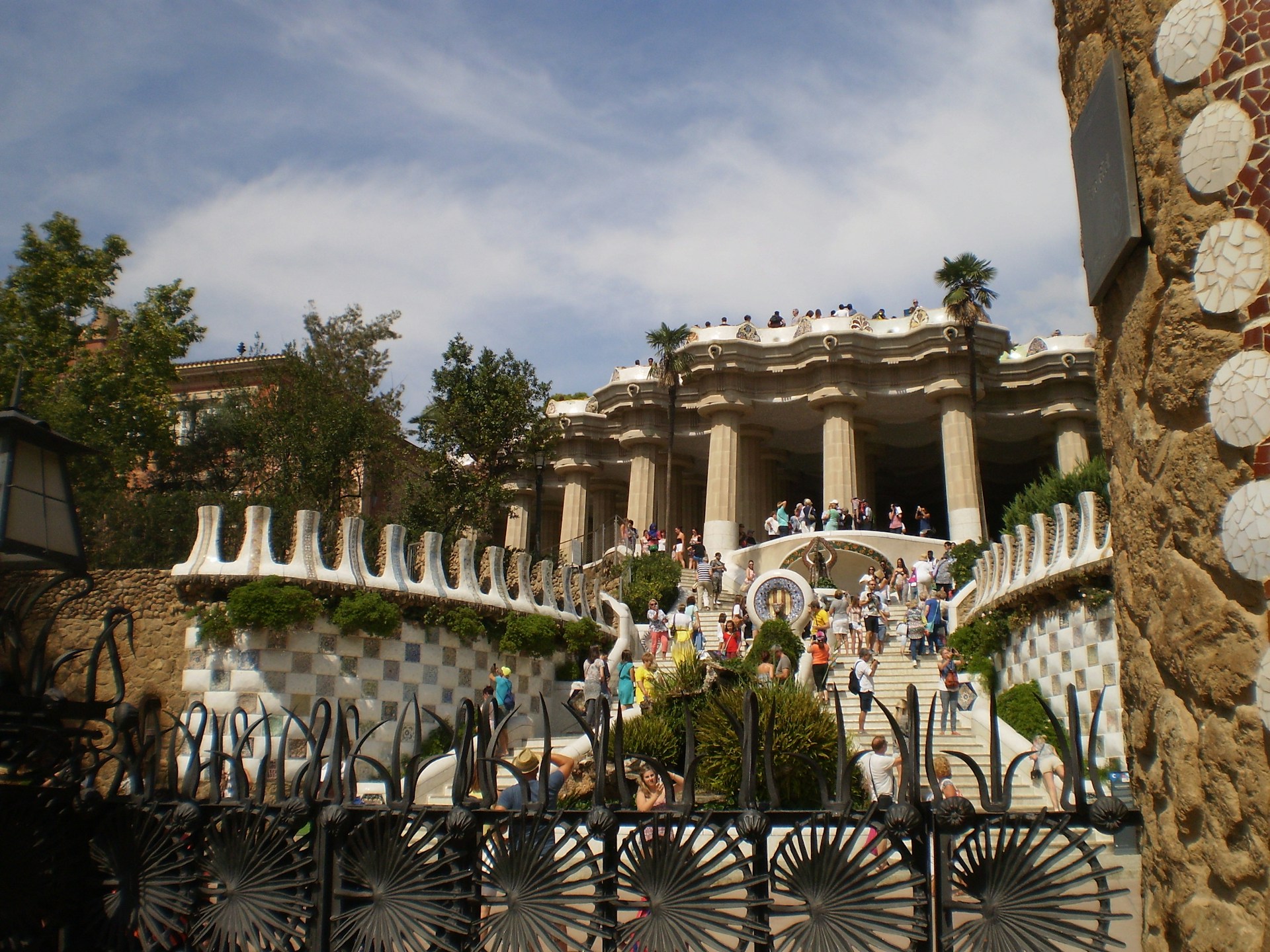
After climbing the stairs, you’re surrounded by 86 towering columns that support the much-photographed serpentine bench that rests above it.
Gaudí was inspired by classic architecture, but he always put his own spin on it. While these columns look like Greek or Roman remnants, he defied the rules of classical composition by placing some of the columns on a slant rather than a straight line.
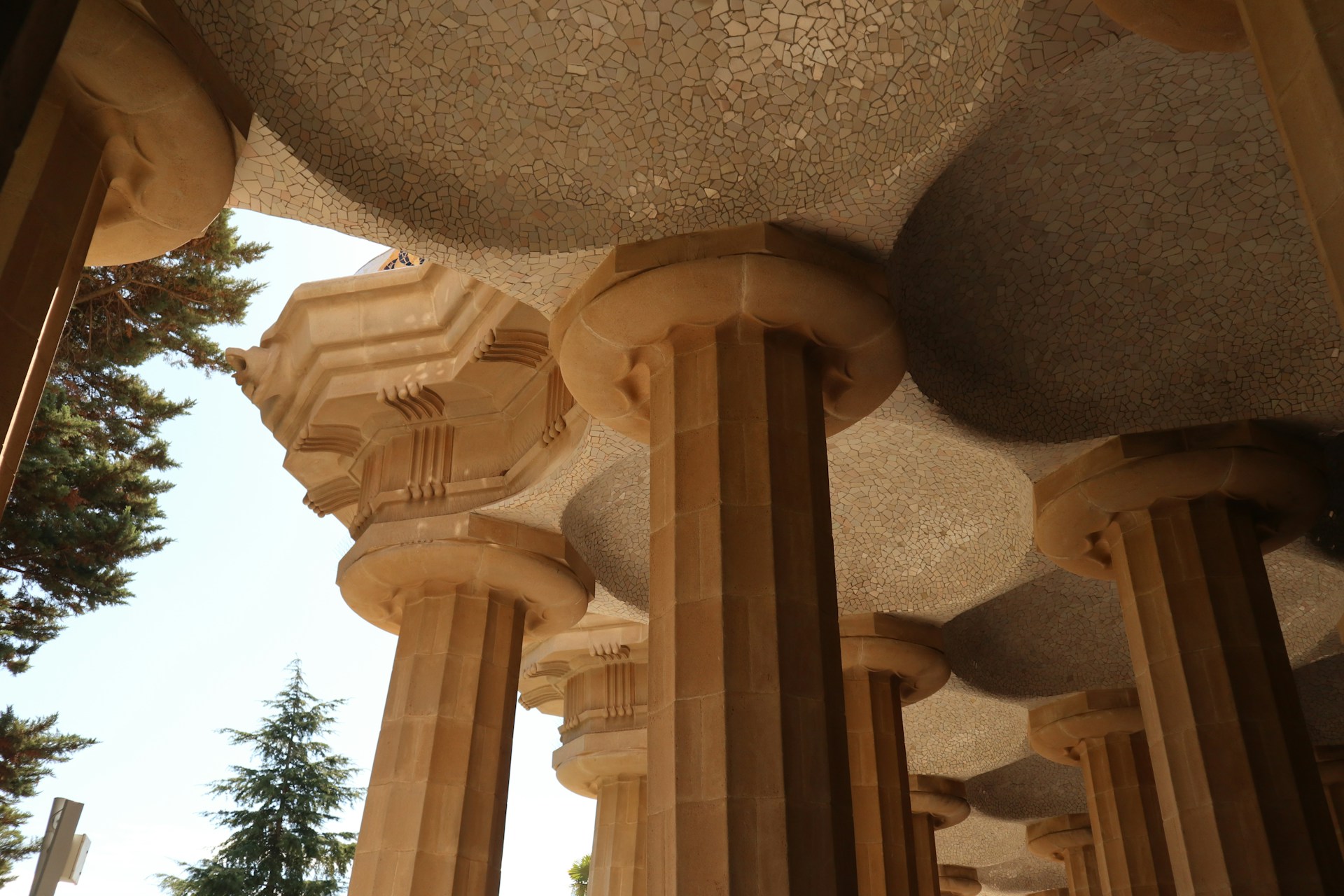
Don’t just pay attention to the columns when you’re in the Hypostyle Room — look up! The ceiling is decorated with tile-shard mosaics designed by Gaudí’s assistant, the Spanish architect Josep M. Jujol.
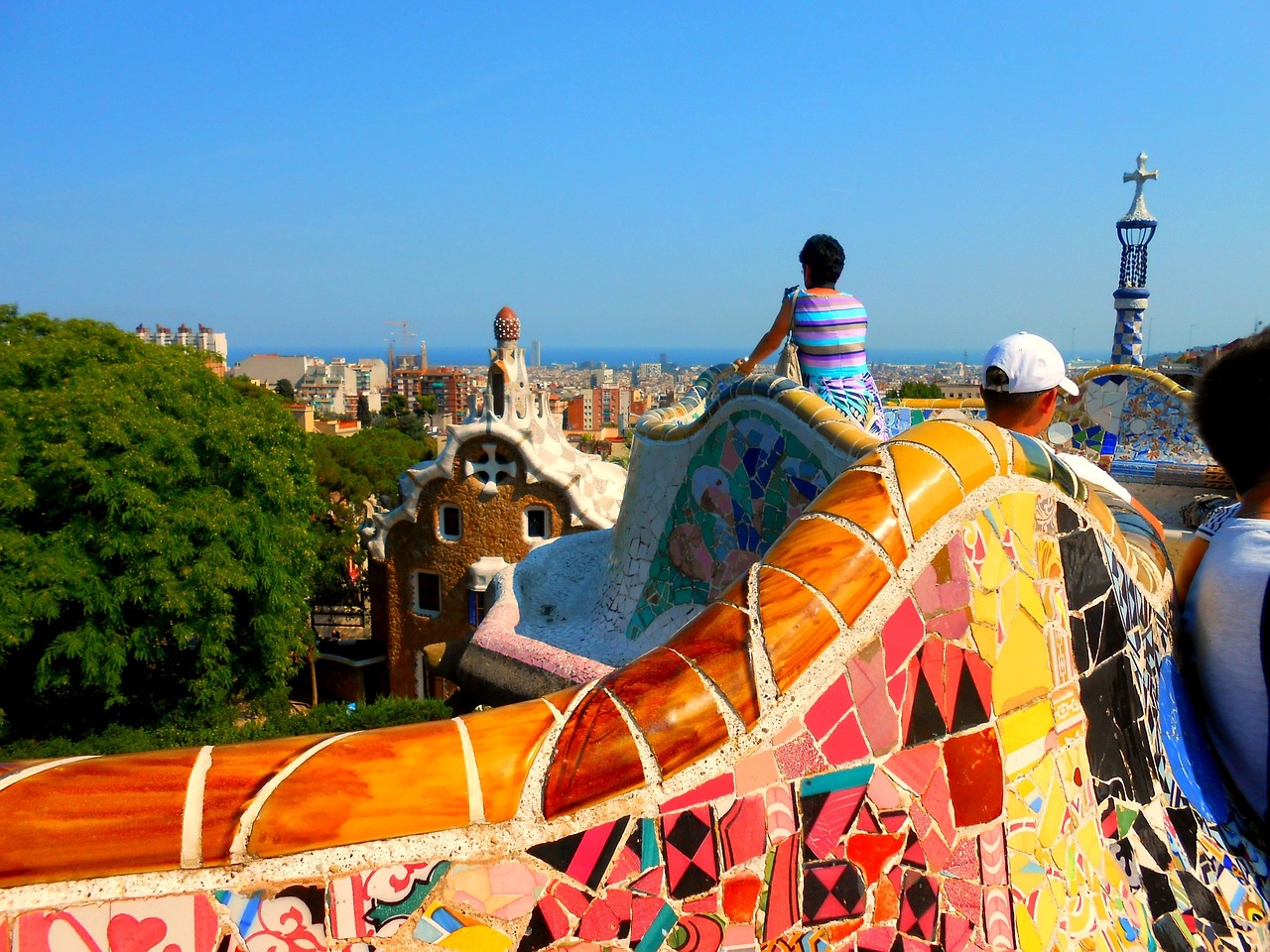
ne of the best views of Park Güell is from Gaudí’s Serpentine Bench, located in the Nature Square. Like El Drac, the 360-foot-long bench is made of colorful tile shards in the Trencadis mosaic style.
But what’s most striking is its shape. Gaudí’s obsession with serpents is evident in how the bench seems to move like the body of a snake slithering on the ground.
The curves of the bench uniquely form small enclaves where people could converse privately in a large social square. Gaudí even designed the bench to collect rainwater and drain out through holes in the backrest to a gutter on the other side, so people would never have to sit on a wet bench.
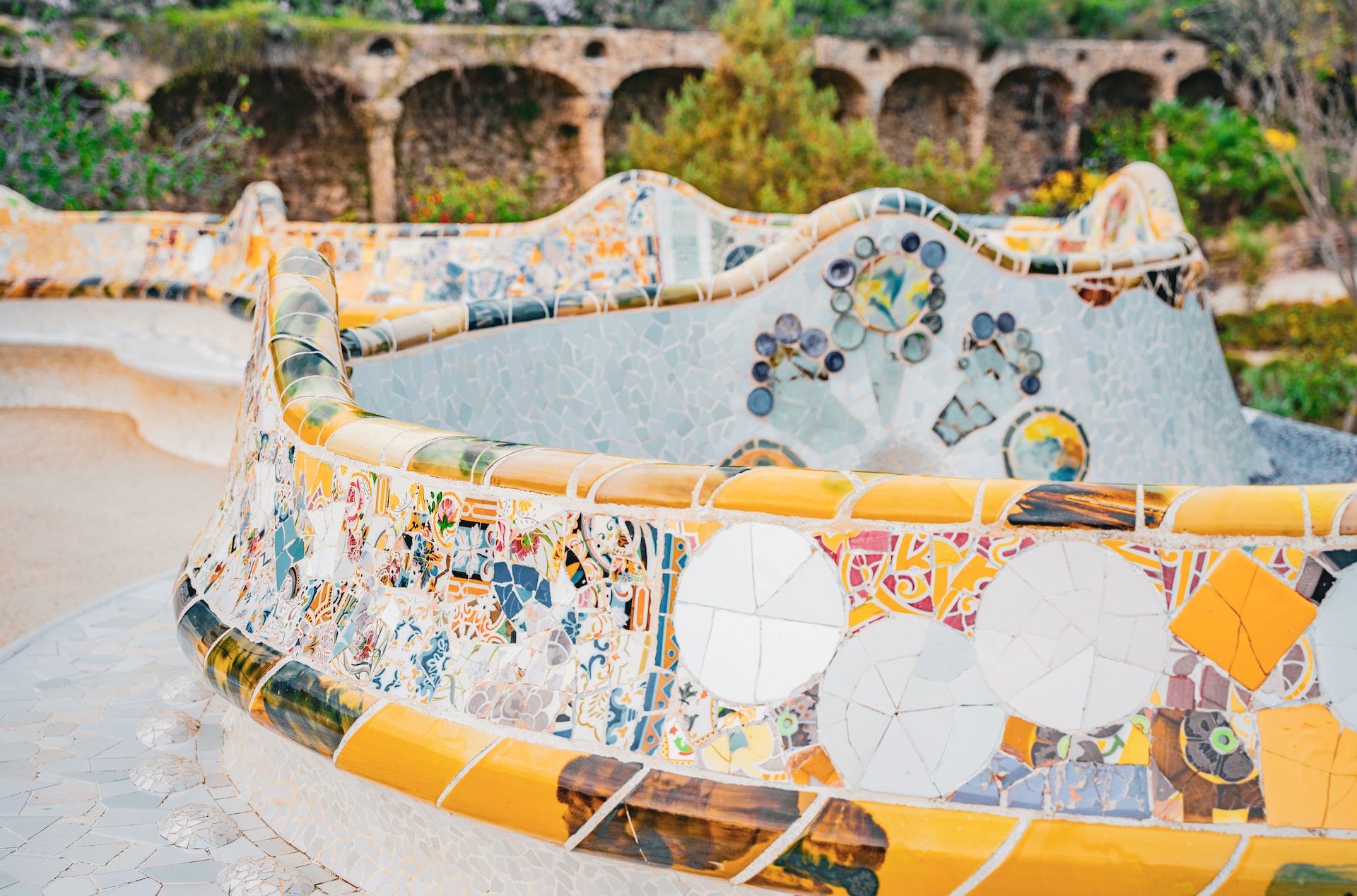
The bench encloses the space known as the Nature Garden, formerly known as the Greek Theatre, which was designed to host open-air shows for residents to watch from the terraces of their homes (the 58 homes that were never built).
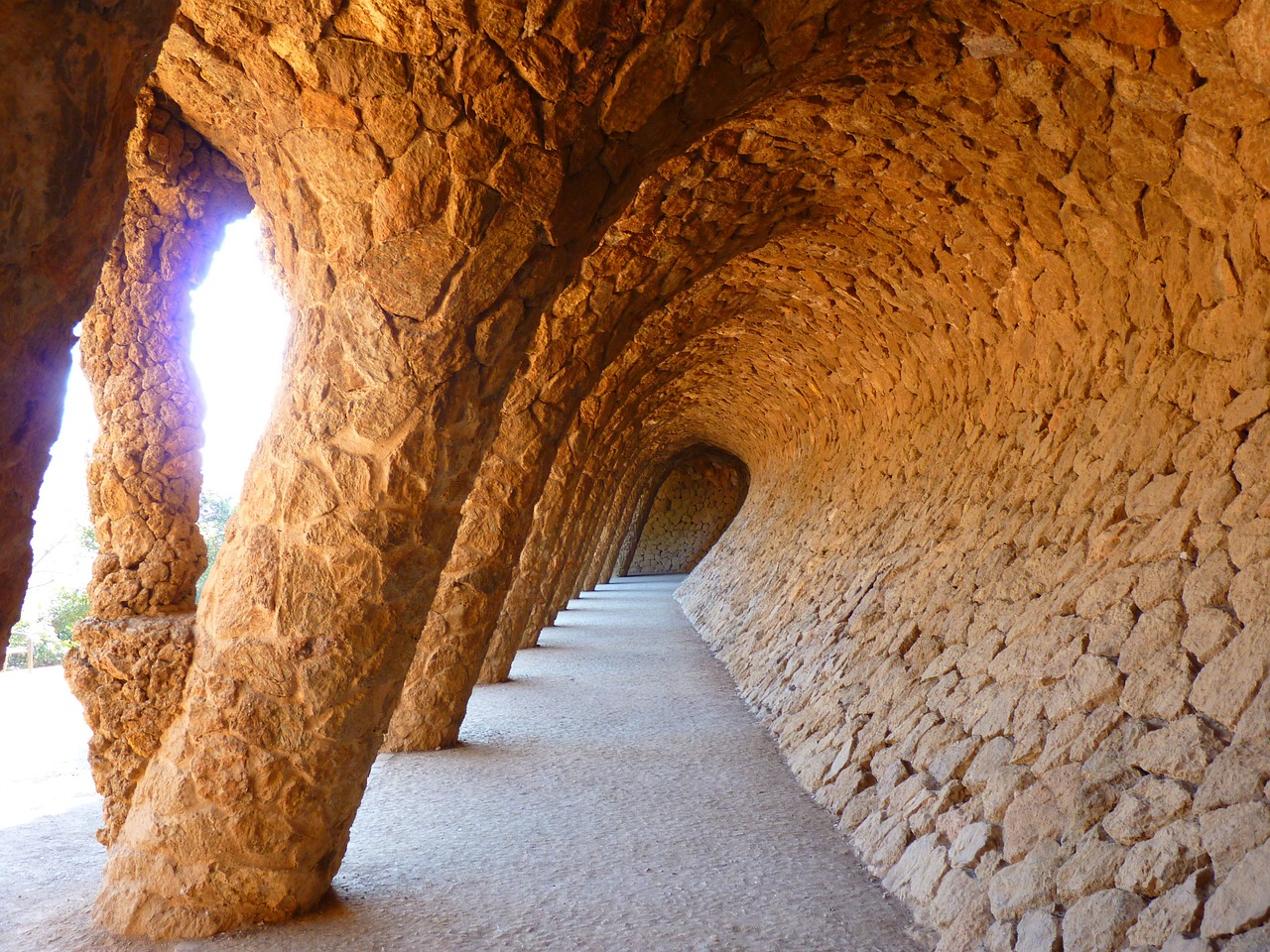
The Washerwoman Portico was the entrance to the gardens of Casa Larrard, a mansion that was briefly Güell’s home before it became a school in 1931. What’s cool about this structure is that it was designed to mimic an ocean wave with slanting pillars and statues of unworked stone that blend with the surrounding natural landscape.
When walking through the portico, look closely at the columns to find a sculpture of a washerwoman carrying a basket of clothes above her head.
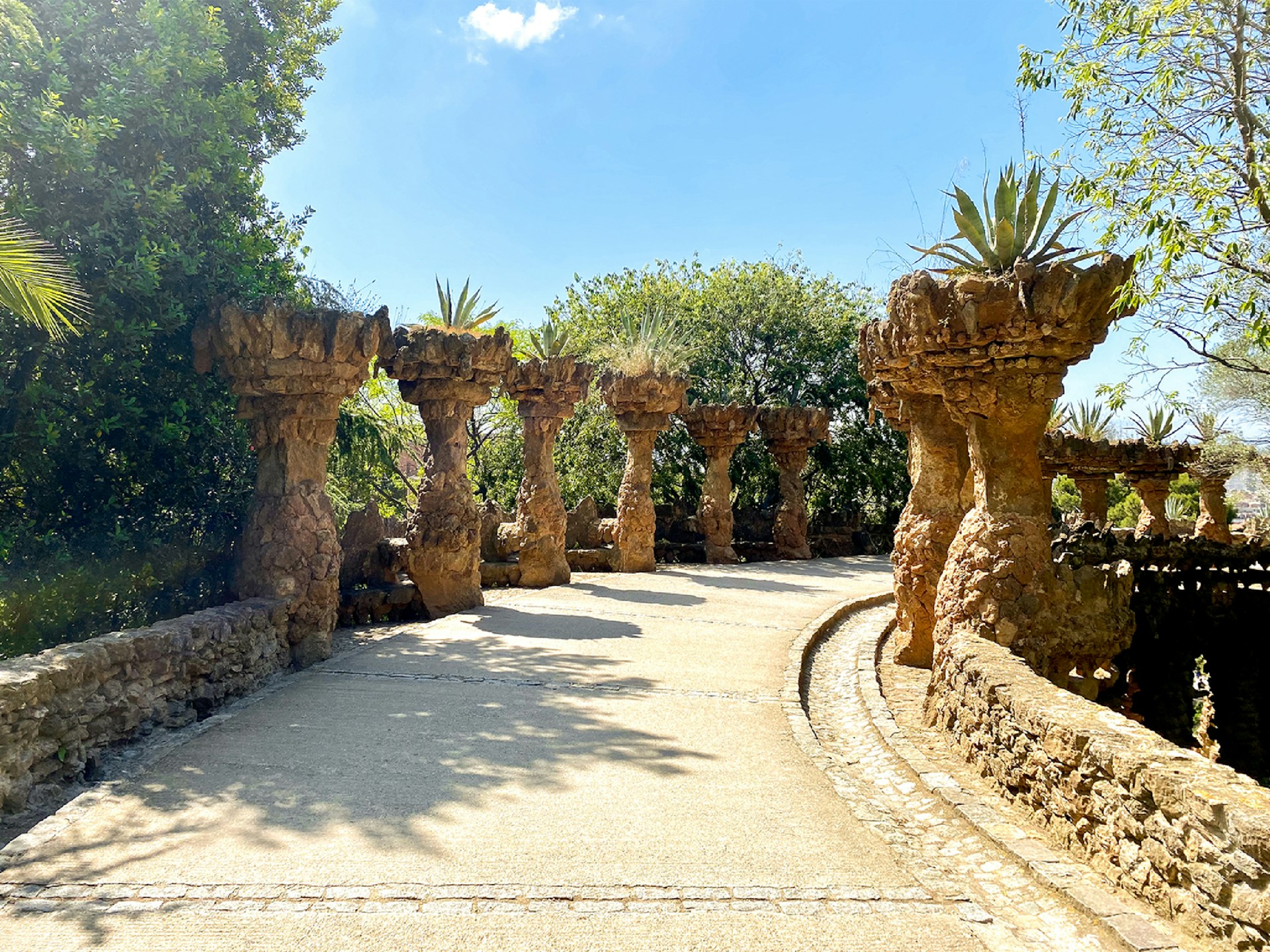
Gaudí created a system of viaduct paths to easily connect the different levels of the park. In addition to the Washerwoman Portico, there are three viaducts — one high, one medium, one low — that Gaudí integrated into the rocky terrain.
While they were originally designed to enable people and cars to move around safely, today they make beautiful walking paths for visitors to stroll on.
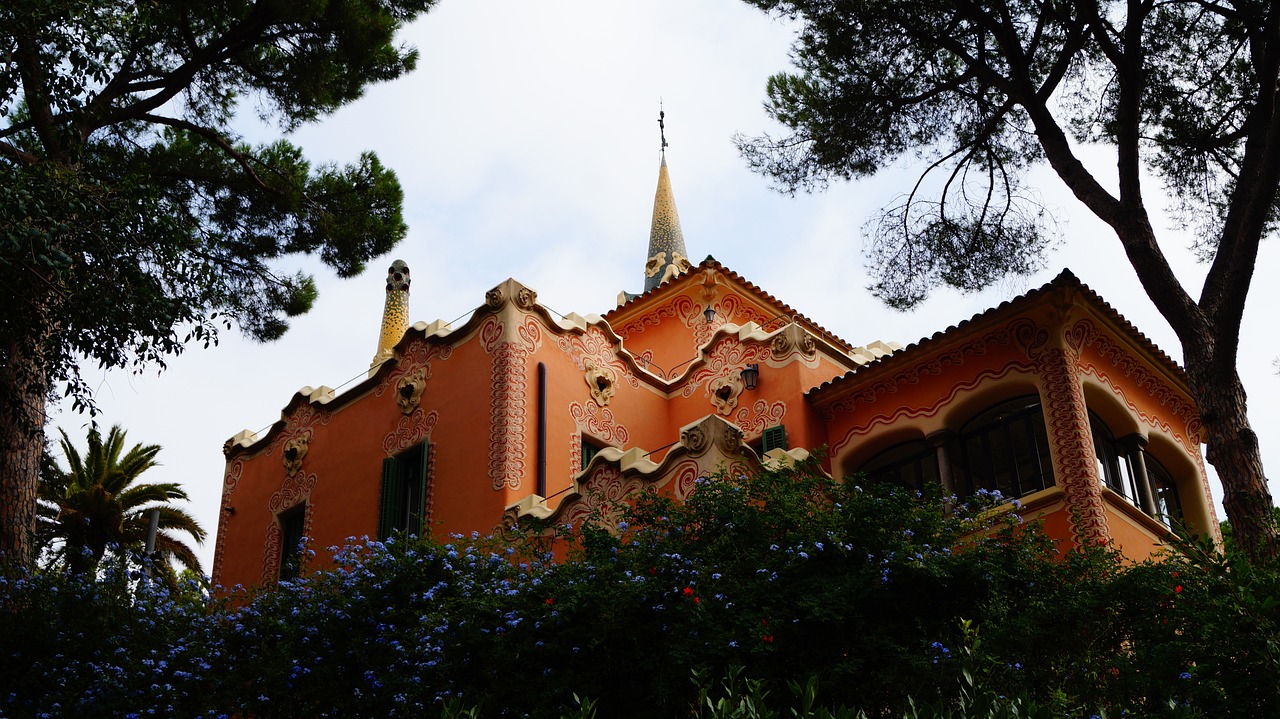
Not only do the Austria Gardens have many different types of plants to take pleasure in, but they also offer you a great view of both Gaudí’s and Güell’s homes.
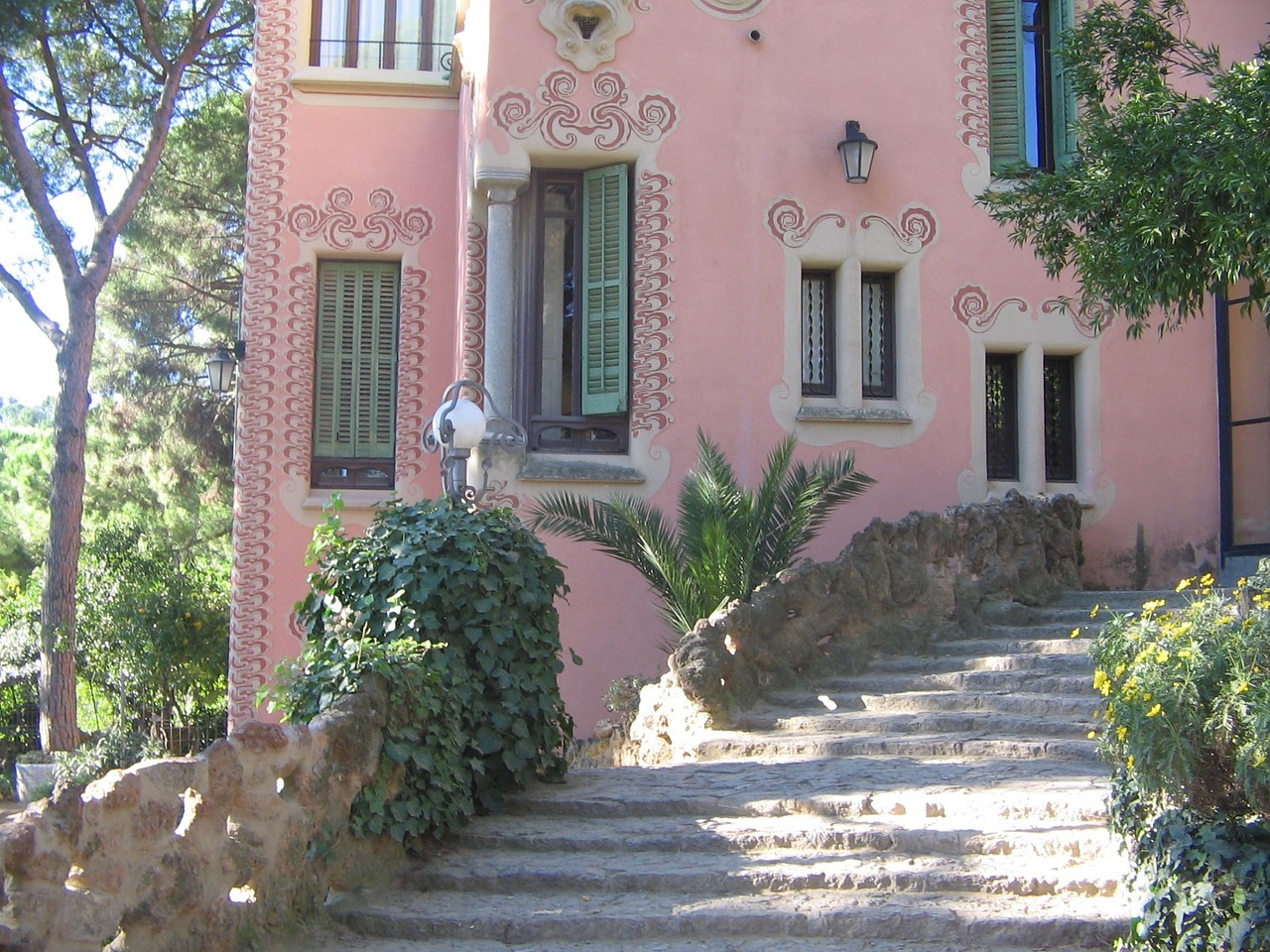
Gaudí’s house, which he moved into with his father and niece in 1906, is now a museum that aims to show visitors the architect’s religious side. The rooms have been recreated to display his personal items, which give us a better sense of who the man was, not just the artist.
To know: The Gaudí House Museum requires a separate ticket from your visit to the park. You can consider combining your visit with a tour of the Sagrada Família.
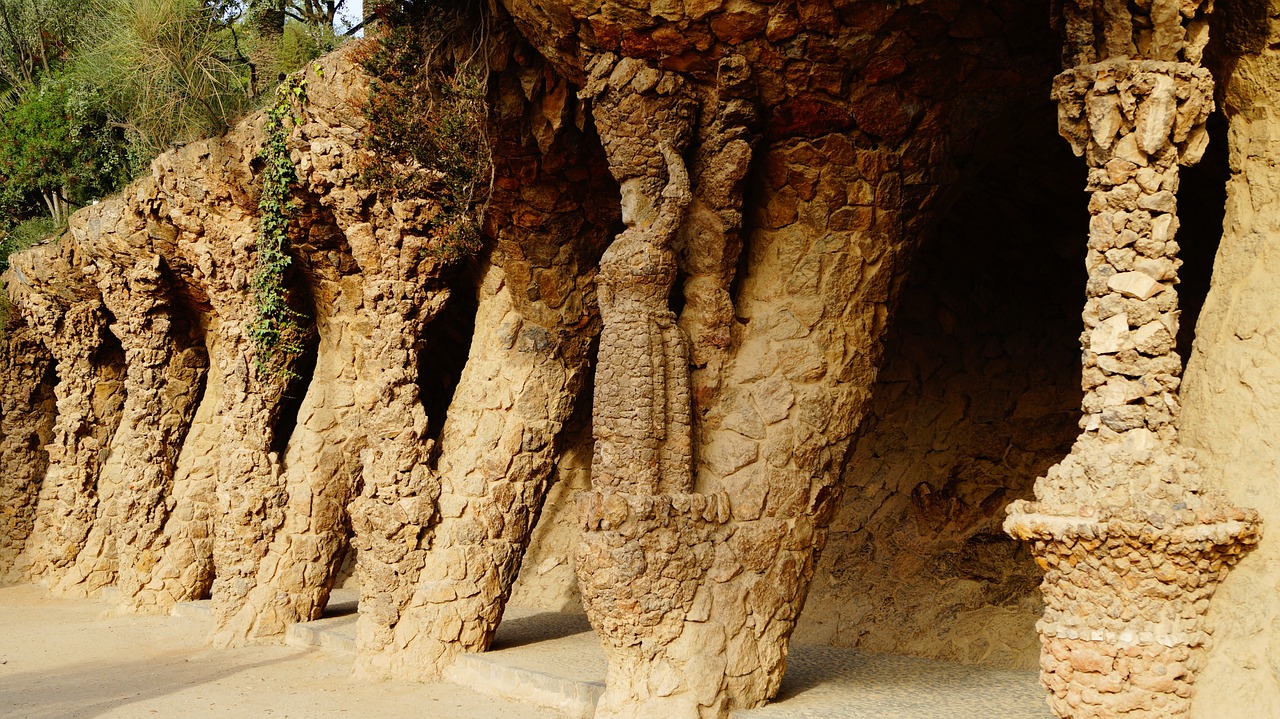
Park Güell is located in the Gràcia district, surrounded by the neighborhoods El Coll, La Salut, Vallcarca i els Penitents, and El Carmel. For the 76,000 people who live in the surrounding area, the park is a green escape from urban life.
The park opens at 9:30 a.m. all year round, but the last time to access the park varies by season. Check the Park Güell website for the most up-to-date information.
A limited number of visitors can enter Park Güell a day, so tickets must be reserved ahead of time. General admission (€10) and guided tour (€22) tickets give you access to the areas of the park where Gaudí’s famous works are located. Children under 7 enter for free, and children 7-12 and senior citizens pay €7 for general admission.
Learn more about all the ticket options on the Park Güell website.
Yes, you must arrive at the park entrance at your scheduled time. You won’t be allowed to visit outside the time stated on your ticket.
Once you’re inside the park, you can spend as much time going through it as you need. With a general admission ticket, three hours is a good amount of time to see the best of Park Güell.
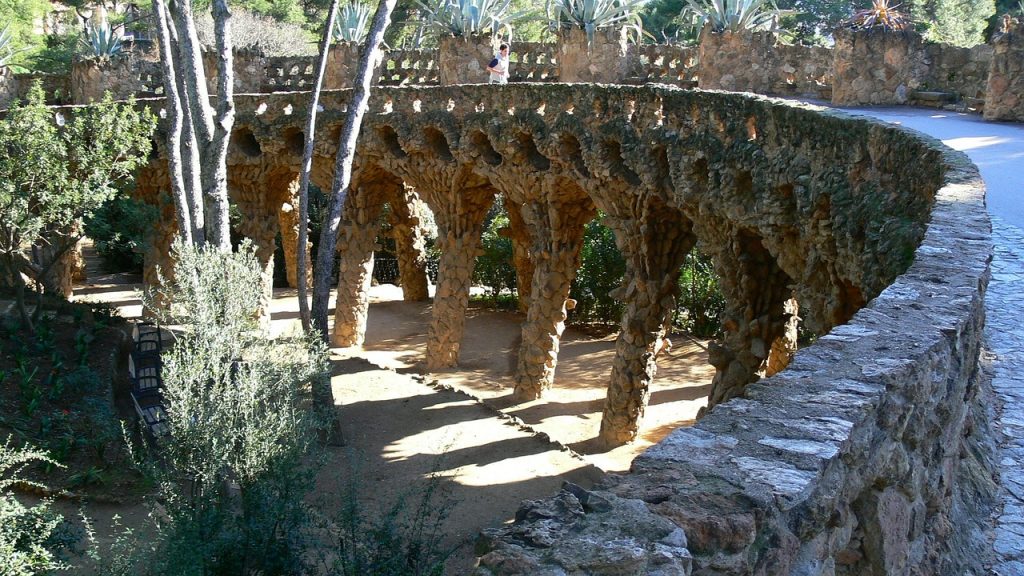
Don’t just stop at Park Güell — there are so many places to see Gaudí’s architecture around Barcelona, and any of our popular walking tours will help you make the most of your experience.
From discovering the secret facades of the Sagrada Familia to comparing the unique architectural styles of all of Gaudí’s houses, you’ll get a deep dive into the Catalan architect’s work from a local expert.
Choose from or combine any of our tours covering architecture or the neighborhood of Park Güell.

La Rambla, a pedestrian boulevard in Barcelona, may sound like any flâneur’s dream with its long line of beautiful trees, variety of cafes…
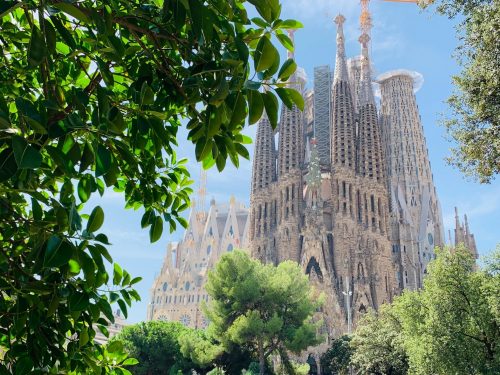
One of the most visited places in Barcelona is the ornate Roman Catholic basilica la Sagrada Família aka the Basilica of the Holy…

Eating tapas is one of the best ways to enjoy food on any trip to Spain. And of course, you want to try…